Ferdinand Berthoud FB 2RE.2 : Superlative Chronometric Performance Verified by Two Independent Testing Laboratories to 0.5 Seconds/Day!
by Ian Skellern
For a watch to qualify as a COSC certified chronometer, the movement not the cased watch) has to be precise to -4 sec to +6 sec per day and that’s more than precise enough for most of us, and that’s precise enough for most brands that care about chronometry.
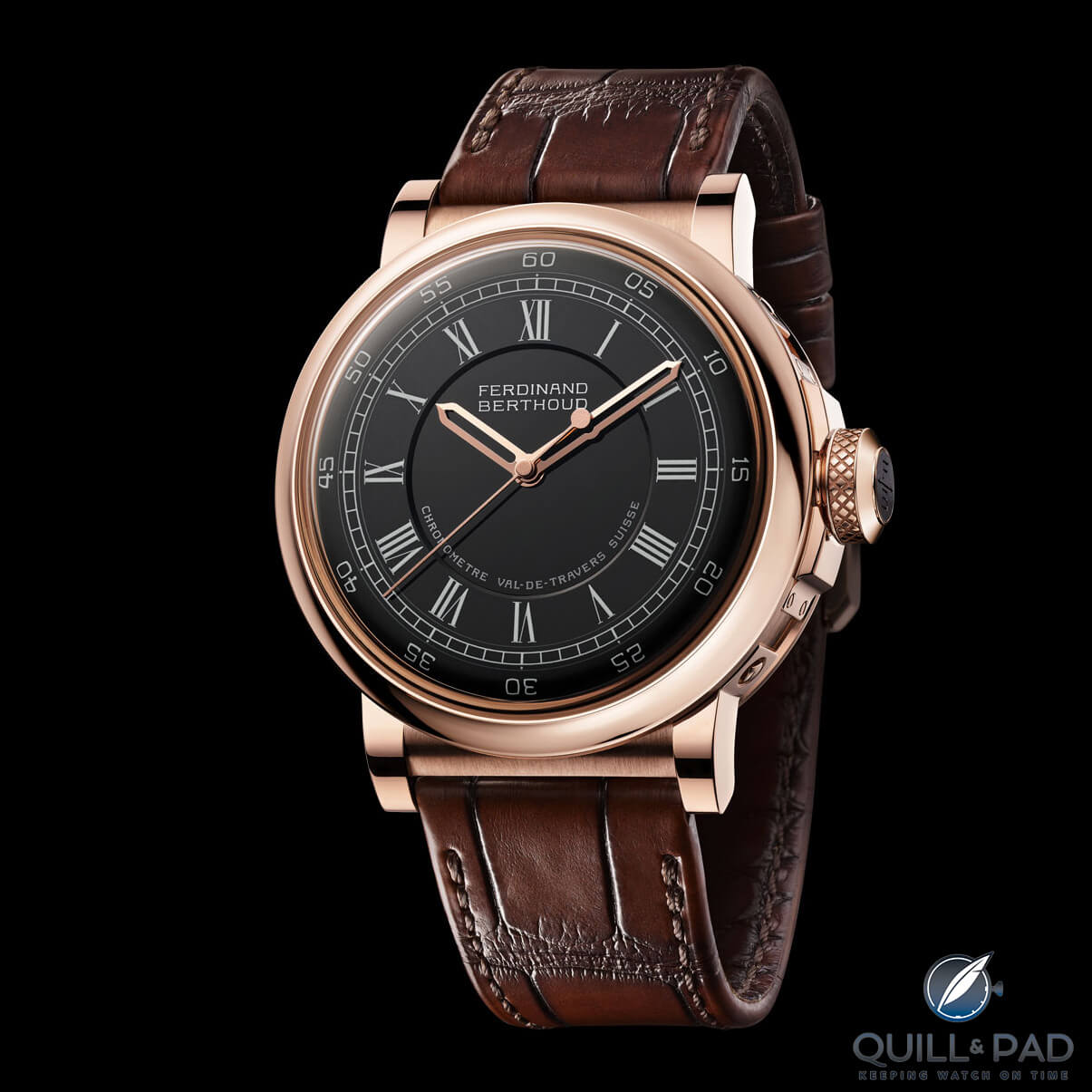
Ferdinand Berthoud FB2.RE2
That’s precise enough for most brands that care about chronometry, but Ferdinand Berthoud is not most brands: Ferdinand Berthoud is dedicated to high precision mechanical time keeping and to that end the brand submitted their FB 2RE.2 model (a fully cased watch not just a movement) to a battery of tests at two independent testing laboratories.
The results are published below and spoiler alert, the precision of the FB 2RE.2 exceeded expectations.
————————————————————————————————————–
—————————————————————————————————–
From the press release:
Most of the watches competing at the 2023 Grand Prix d’Horlogerie de Genève (GPHG) have a three-hand movement that relies on a traditional escapement, a choice that has proved itself in terms of reliability for over a century.
However, in the Chronometry category in which Chronométrie Ferdinand Berthoud’s FB 3SPC model was positioned, over and above reliability, the crucial criterion is accuracy – a quality pursued with passion by master watchmaker Ferdinand Berthoud many years ago, and still the guiding principle in the work of the firm that bears his name.
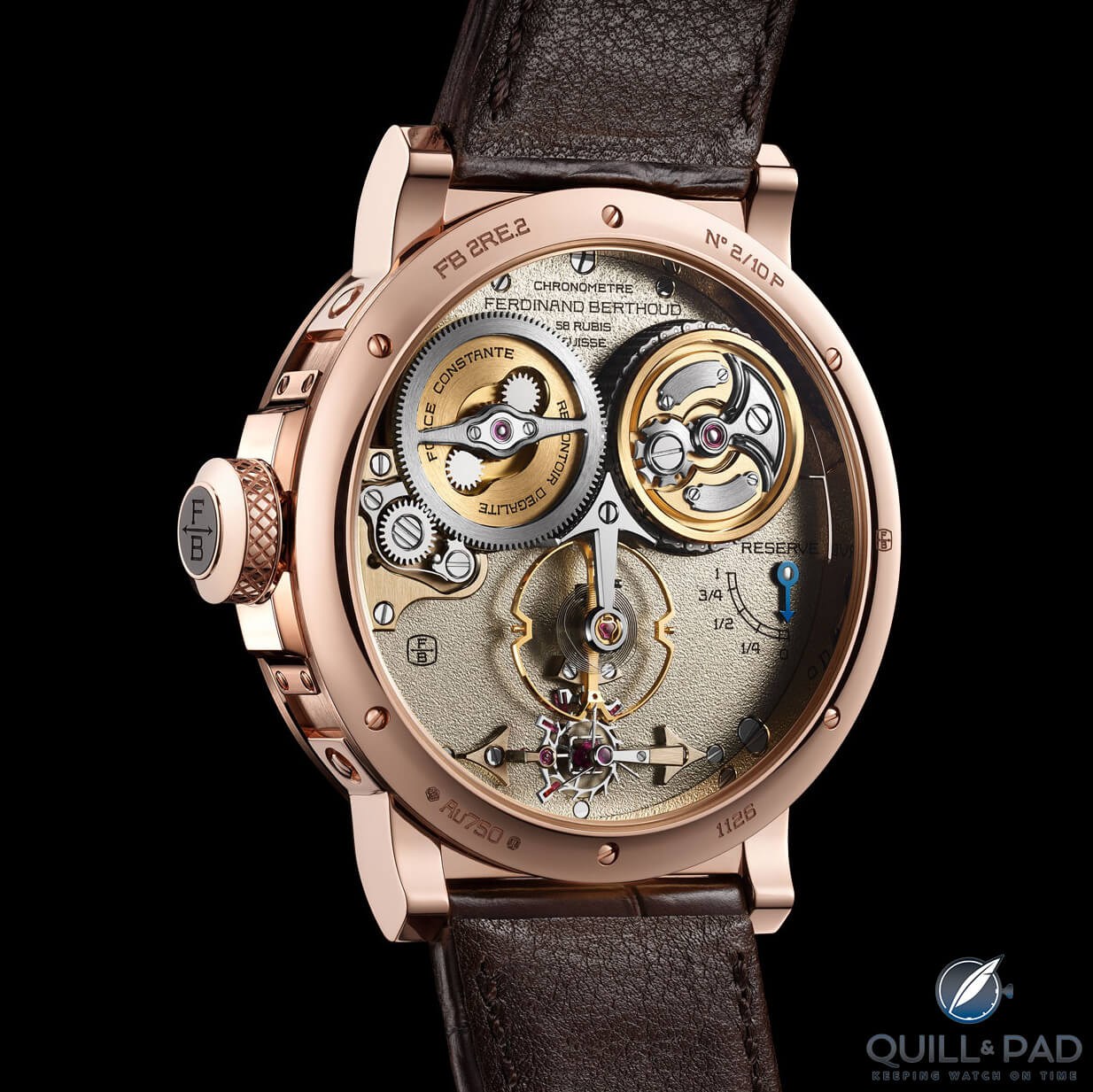
Caliber FB-RE.FC movement visible at the back of the Ferdinand Berthoud FB2RE2
To achieve the highest levels of chronometric performance, the manufacture has committed itself to several radical technical options. The Chronomètre FB 2RE.2 is the result of a new combination of two regulation mechanisms, making it the only timepiece to benefit from a one-second remontoir d’égalité – and the constant force of a fusee-and-chain mechanism.
Driven by the spirit of transparency that typified the Enlightenment, the manufacture is now unveiling an exclusive presentation of its independent test results.
The fusee-and-chain system regulates the torque generated by the barrel, keeping it constant irrespective of whether the watch is fully wound or coming to the end of its power reserve. The remontoir d’égalité comes next: positioned at the end of the gear train, it regulates the torque delivered to the escapement.
It does so by using a constant force spring, a component very similar to a hairspring: this coils and uncoils, always releasing the same quantity of energy, or torque, as it does so.
This remontoir d’égalité operates in conjunction with the escapement wheel. The latter’s rotation spans a 5-fold cycle, following the oscillations of the balance wheel.
During the first 4 oscillations, the remontoire spring uncoils, releasing constant energy. On the 5th oscillation, the triple-shaft stop wheel, which previously prevented the mechanism from coiling back up, is released, allowing the movement to rewind the remontoire spring, which once again begins to release a constant amount of energy for the next 4 oscillations, and so on.
The entire cycle lasts one second.
In addition to this remontoir d’égalité, to ensure optimum chronometric performance, the Calibre FB-RE.FC has been fitted with a new, aerodynamic, two-spoke variable-inertia balance wheel, fitted with four balance screws.
Its large diameter ensures it maintains inertia and stability, while its low frequency of 18,000 vibrations per hour (2.5 Hz) protects the power reserve.
—————————————————————————————————–
—————————————————————————————————–
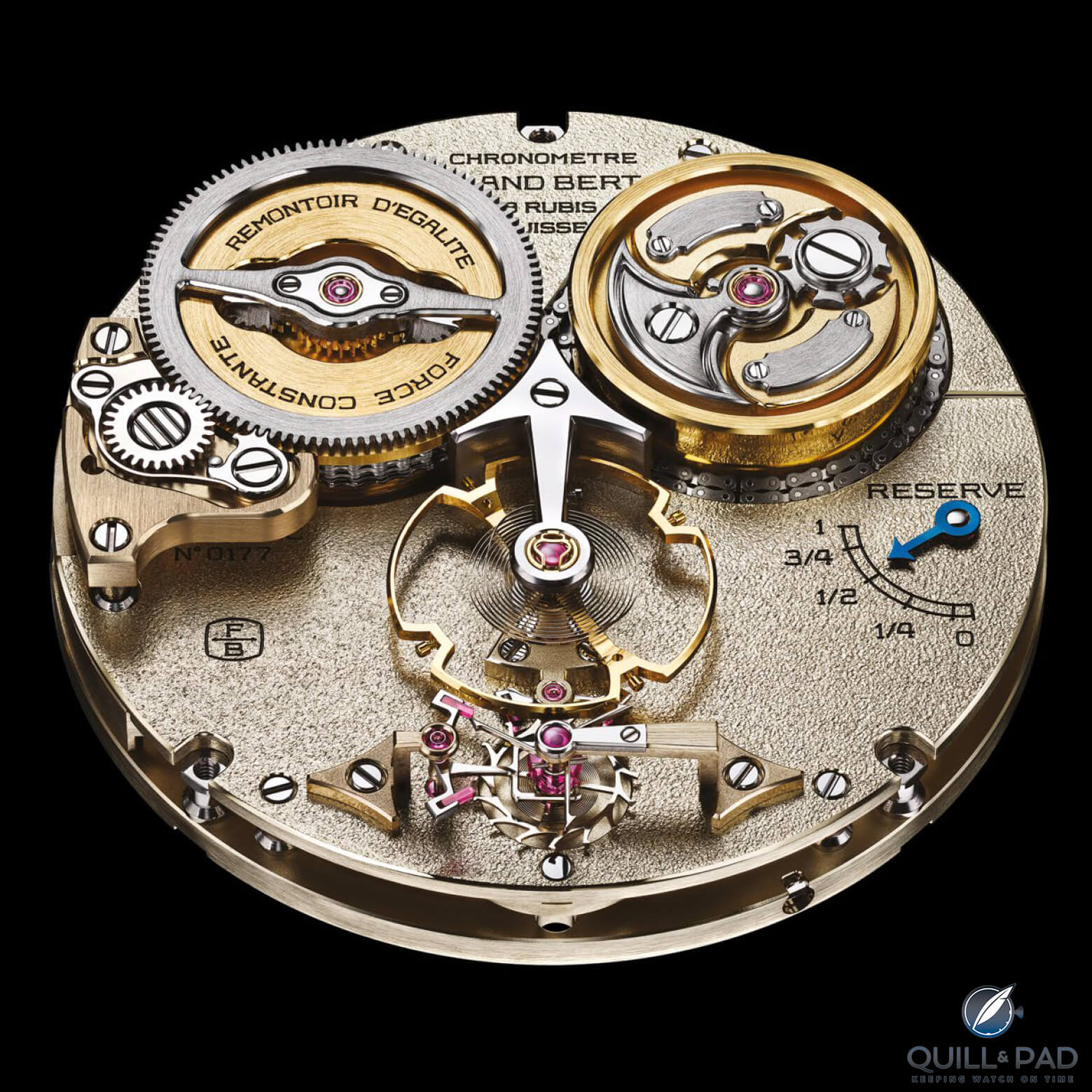
Ferdinand Berthoud Caliber FB-RE.FC
Three successive systems devoted to chronometry
The Chronomètre FB 2RE thus comprises 3 segments. Step by step along the gear train, these gradually remove any torque variations liable to affect its accuracy.
The first component is the barrel spring, the primary source of energy, technically capable of delivering an 80-hour power reserve. In the case of the Calibre FB-RE.FC, only 60% (50 hours’ worth) of this energy is used – the period during which the torque is the most linear.
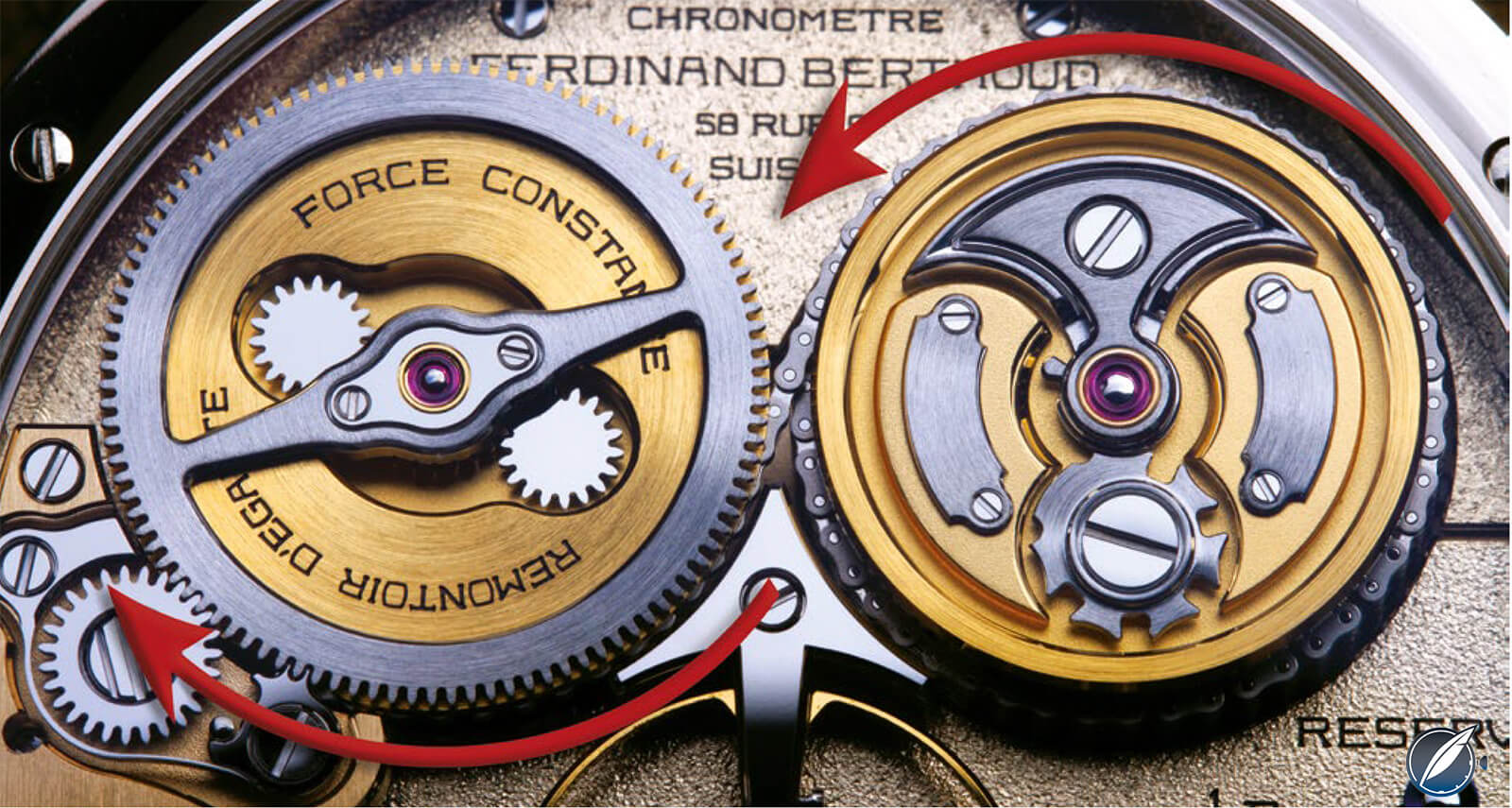
During winding, the chain is wound around the fusee cone, from the largest-diameter end to the smallest. This movement unwinds the chain from the barrel, causing it to rotate.
This constant torque is selected by means of a Maltese Cross system; this can be seen on the top of the barrel drum. In principle, the barrel can rotate up to 8 times, but the Maltese Cross reduces the number of possible rotations to 6, mirrored by the 6 teeth on its profile.

Each rotation brings the Maltese Cross system on the top of the barrel into contact with the pin in the centre, causing the Maltese Cross to take one tooth forward.
The two smaller indentations on the Maltese Cross prevent the power spring from supplying the gear with too much energy (at the beginning of the power reserve) and too little energy (at the end of the power reserve).
The fusee-and-chain system then provides a second level of constant power to the escapement during the 50-hour power reserve, acting rather like an automatic gearbox. The torque delivered by the barrel varies depending on how wound up it is: when the movement is fully wound, the chain is fully wound round the smaller-diameter end of a cone, with the barrel spring providing maximum power at this point.
As time goes by, this force decreases, with the chain winding round the drum and moving from the smaller-diameter end of the cone to the larger-diameter end.
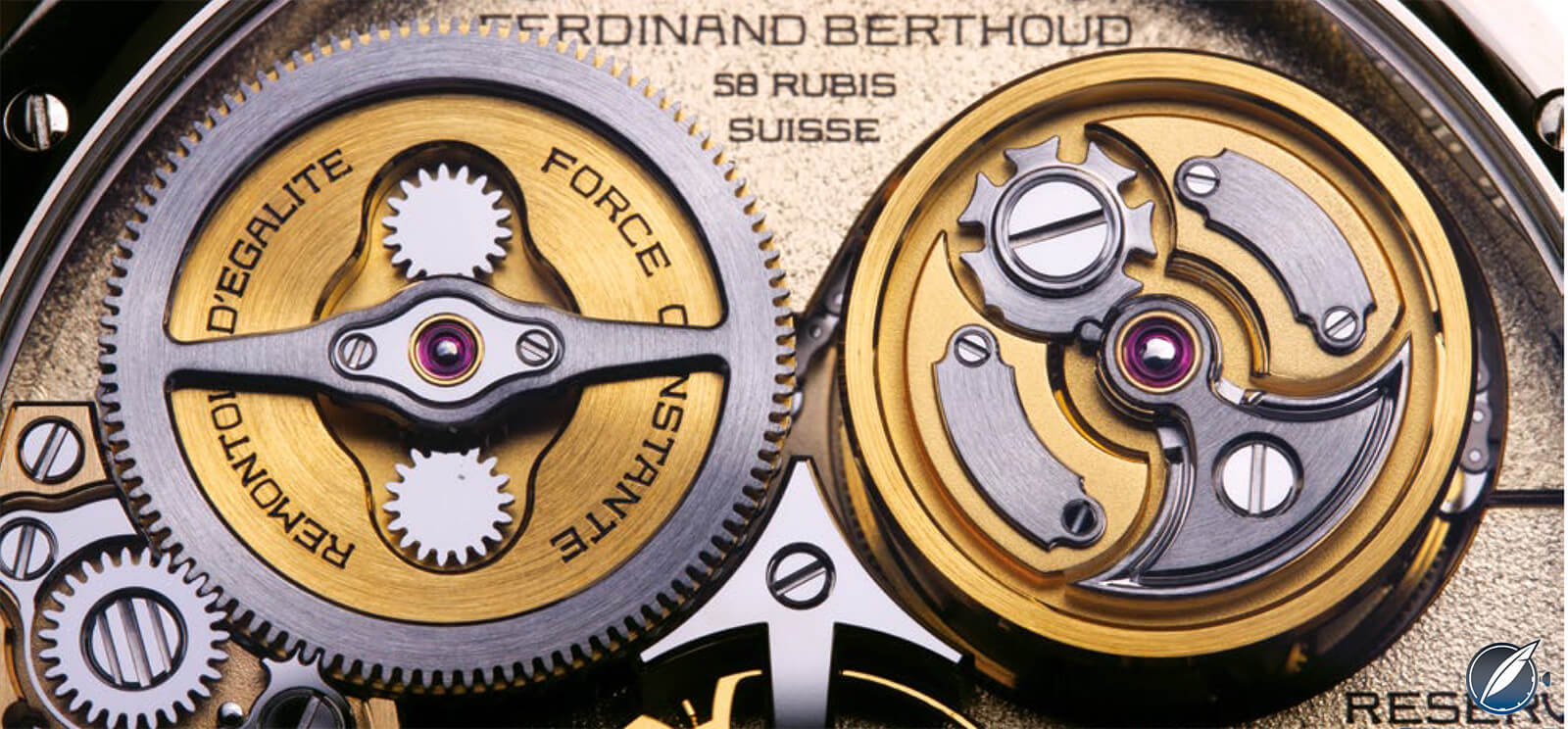
On the sixth and final barrel rotation, the pin comes to rest against the Maltese Cross, preventing overwinding.
The variation in cone diameter compensates for the reduced torque in the barrel spring. By this stage of the process, the FB 2RE model already has a much higher degree of isochronism than prevailing standards, as can be seen from the results of the tests carried out on the FB 1.
This regulated energy then enters the third and final system: the remontoir d’égalité . This is designed to reduce the minute irregularities that occur when the teeth mesh, making the power supplied even more stable – so much so that the energy ultimately supplied to the escapement is almost perfectly constant.
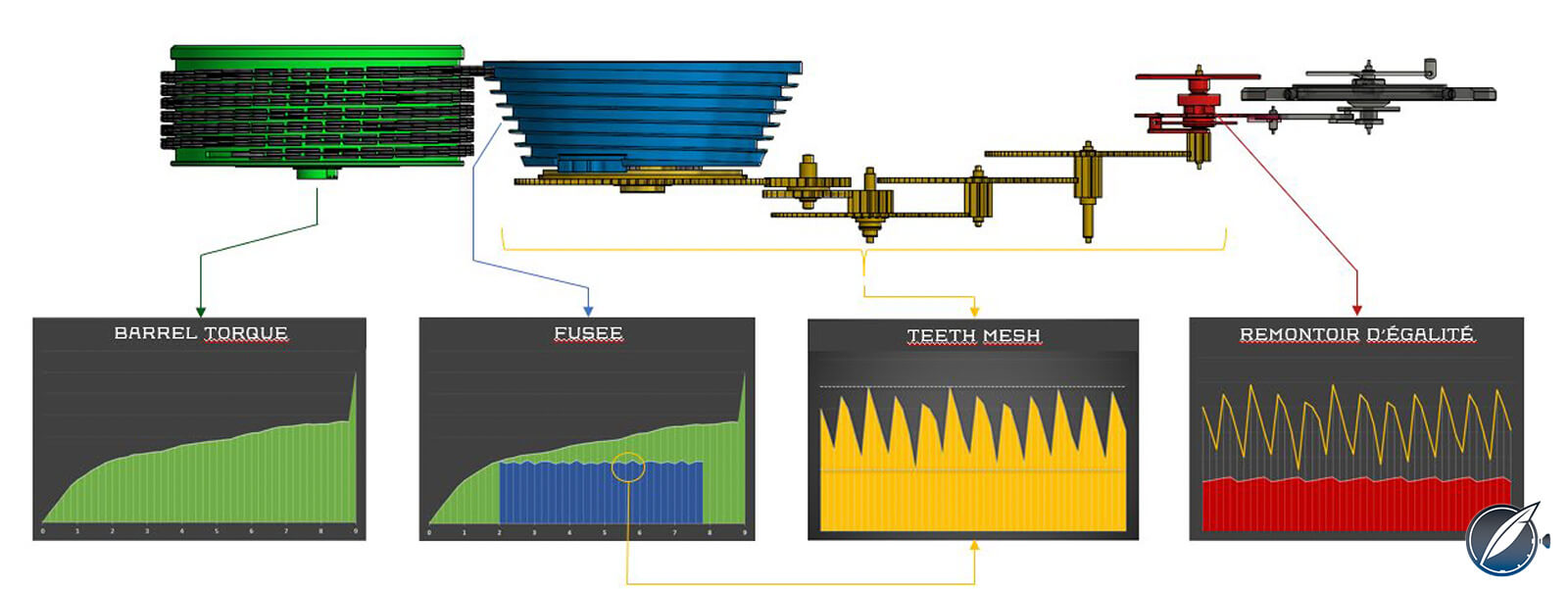
Ferdinand Berthoud gear train
—————————————————————————————————–
—————————————————————————————————–
Outstanding chronometric results
Certain standard movements without a constant force mechanism can lose as much as 10 seconds a day after operating for 36 hours. Eventually, the loss of torque is so great that running time varia- tions of almost one minute are not uncommon.
Keen to demonstrate the chronometric performance of its collections, in 2019 Chronométrie Ferdinand Berthoud decided to have a new inde- pendent test performed: the Fleuritest, conducted by the Fleurier Quality Foundation.
For a piece to qualify as a ‘Chronometer’, it must under- go measurements performed in laboratory conditions by the Official Swiss Chronometer Testing Institute (Contrôle Officiel Suisse des Chronomètres, COSC) for 15 days on each movement. Besides, the Fleuritest adds an additional, fundamental notion: experimentation in real-life conditions.
The test is one of the most demanding in the watchmaking industry, faithfully reproducing everyday body movements and alternating active and rest periods, during which running time variations are analyzed using digital cameras.
These measurements are taken on a cased movement throughout the entire power reserve period and are considerably more meaningful in that they are closer to the actual conditions in which clients wear their watches every day.
Pursuing the principle dear to the eponymous master watchmaker of sharing both the fruits of knowledge and research findings, Chronométrie Ferdinand Berthoud submitted the new Chronomètre FB 2RE.2 to the same battery of tests.
The remontoir d’égalité with fusee-and-chain movement was tested by two independent laboratories; firstly, at the COSC for 15 days, and then, once housed in its case, for a further two days (50-hour power reserve) using the Fleuritest.
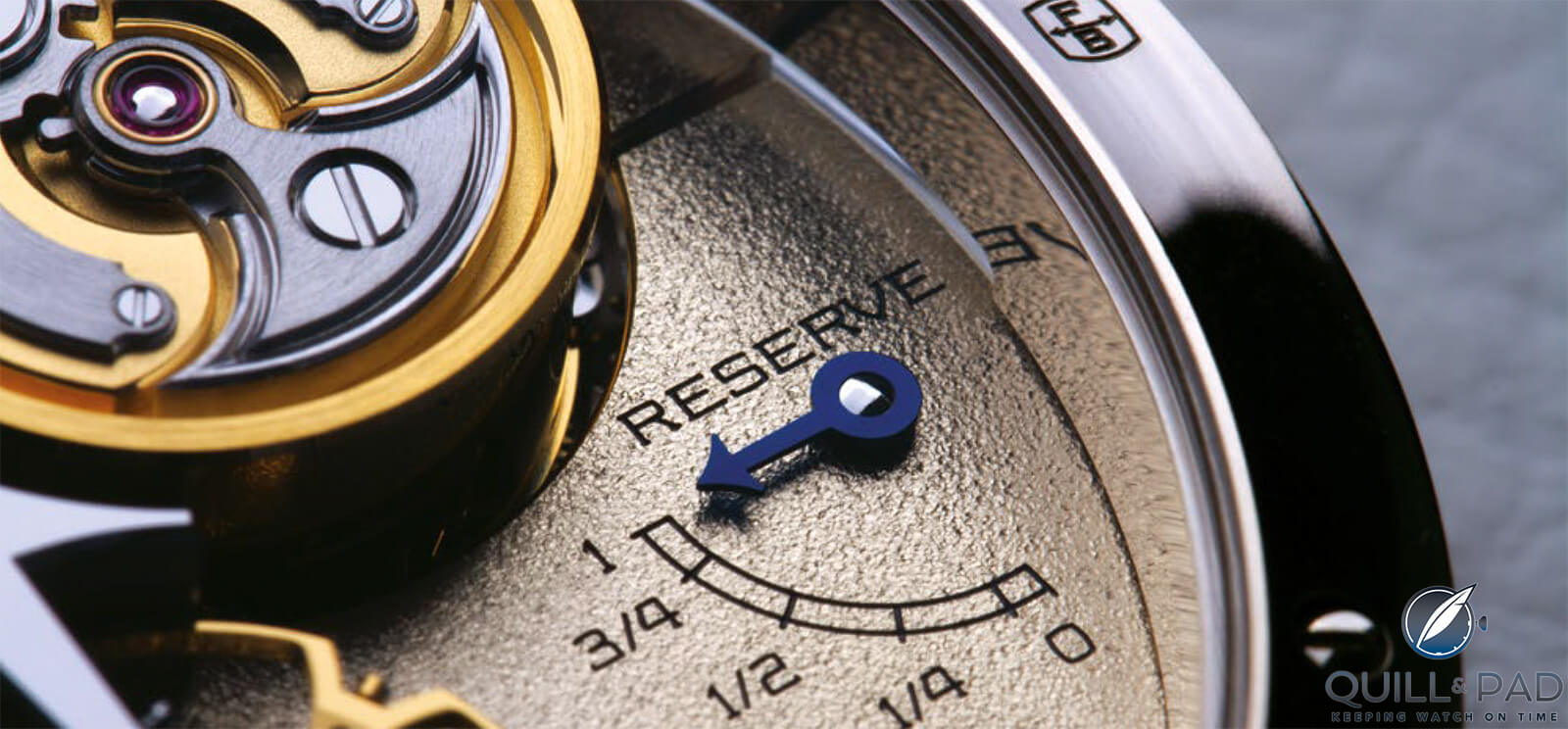
Ferdinand Berthoud FB2RE2 had high precision over the full power reserve
The results are beyond dispute: over the entire duration of the power reserve, the readings taken show discrepancies of less than 0.5 seconds on average from the benchmark GPS clock optical measurement. For the FB 2RE model, there is thus very little difference in running time between the first and the last minute – in tests performed in actual conditions, simulating the movements of a watch on the wrist.

Amplitude variation: comparison (for a given position) between a conventional mechanical movement (in red) and the Calibre FB-RE.FC (in blue) for the entire duration of their respective power reserves.
This outstanding level of isochronism correlates with the amplitude measurements for the FB 2RE: an average amplitude of 301°, presenting only a very slight variation throughout running time (standard deviation=2°).
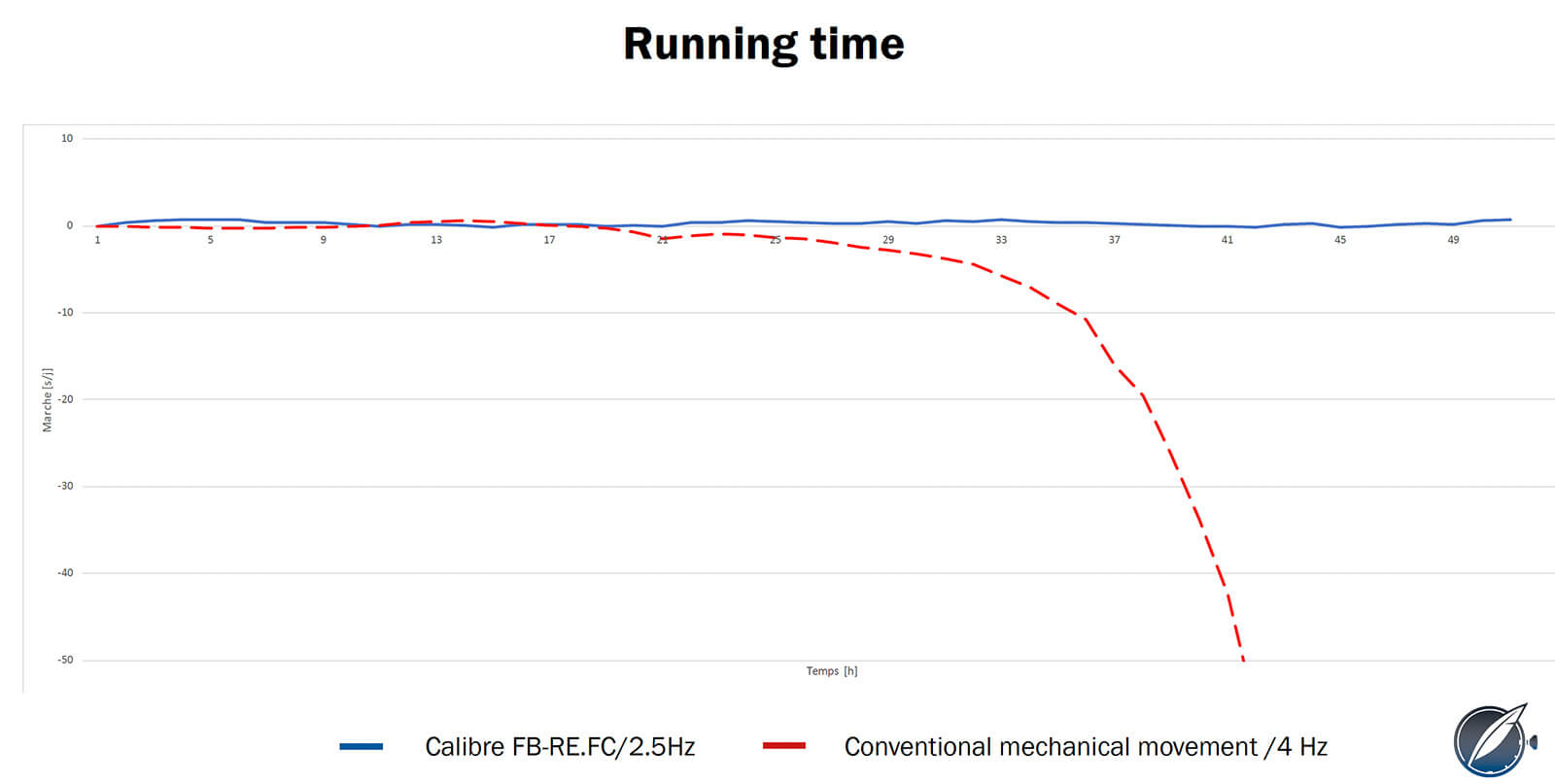
Running time: comparison of a conventional mechanical movement (in red) and the Calibre FB-RE.FC (in blue) for the entire duration of their respective power reserves.
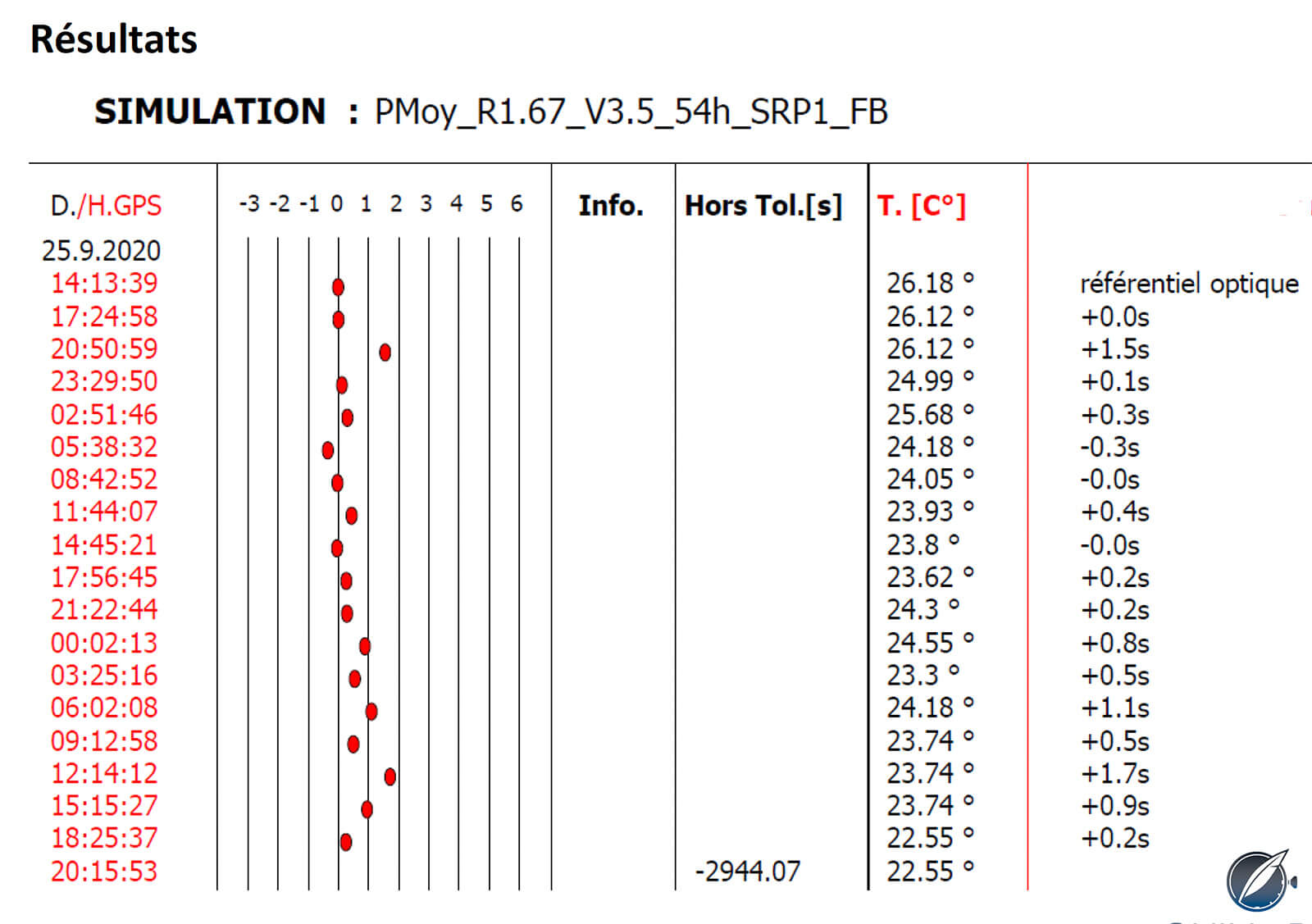
Fleuritest test results for the Ferdinand Berthoud FB2RE2
For more information, please visit www.ferdinandberthoud.ch/en/chronometre-fb-2res-1-1.html
You might also enjoy:
Ferdinand Berthoud Chronométre FB 3SPC: a Watch for Today Right Out of History
Ferdinand Berthoud Chronomètre FB 2RE: Change Is Round
Ferdinand Berthoud FB 2RSM.2-1: A Sensational ‘Apprentice Piece’
Ferdinand Berthoud FB 1L: When History Has A Date With Progress
Leave a Reply
Want to join the discussion?Feel free to contribute!

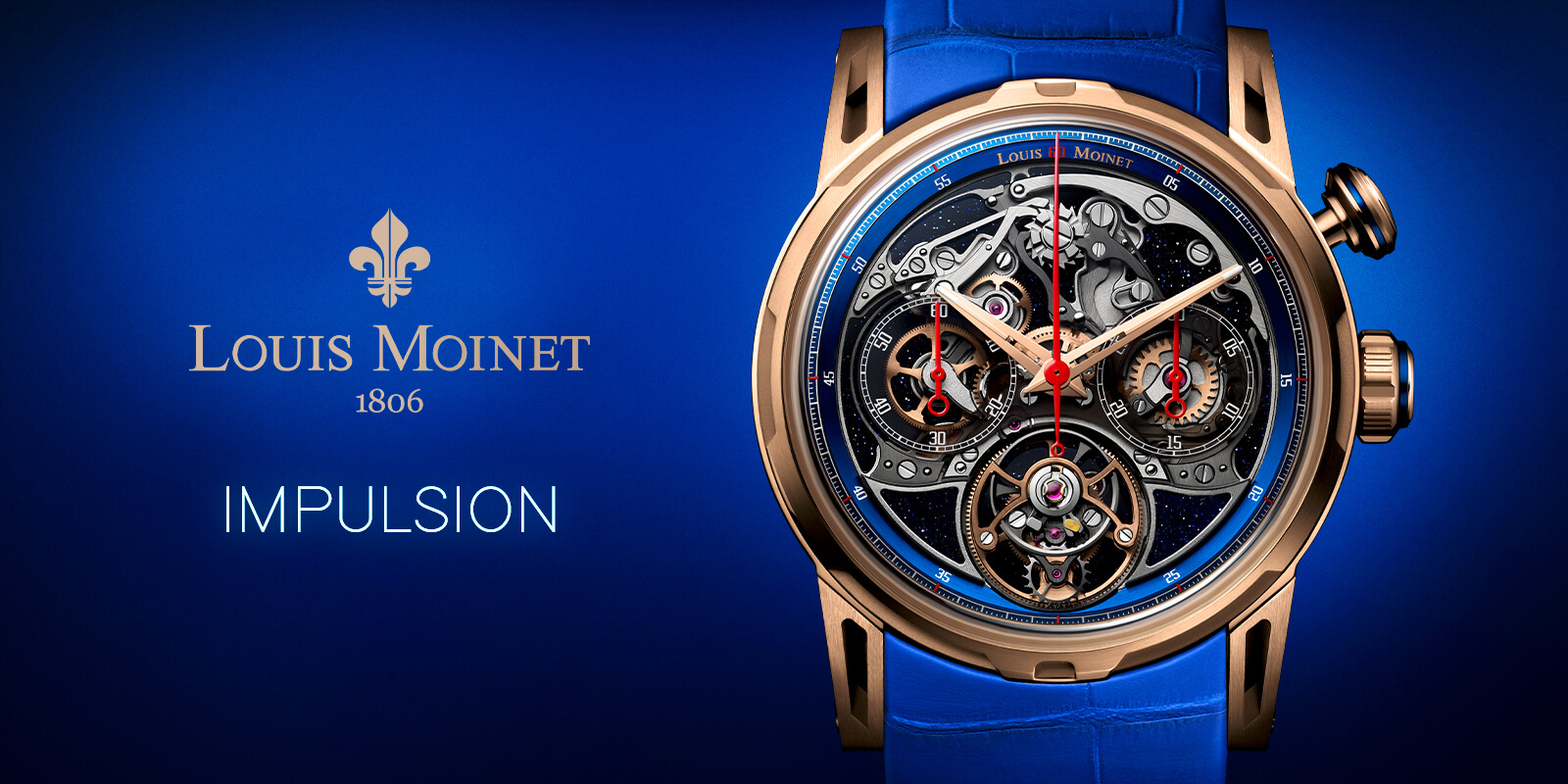
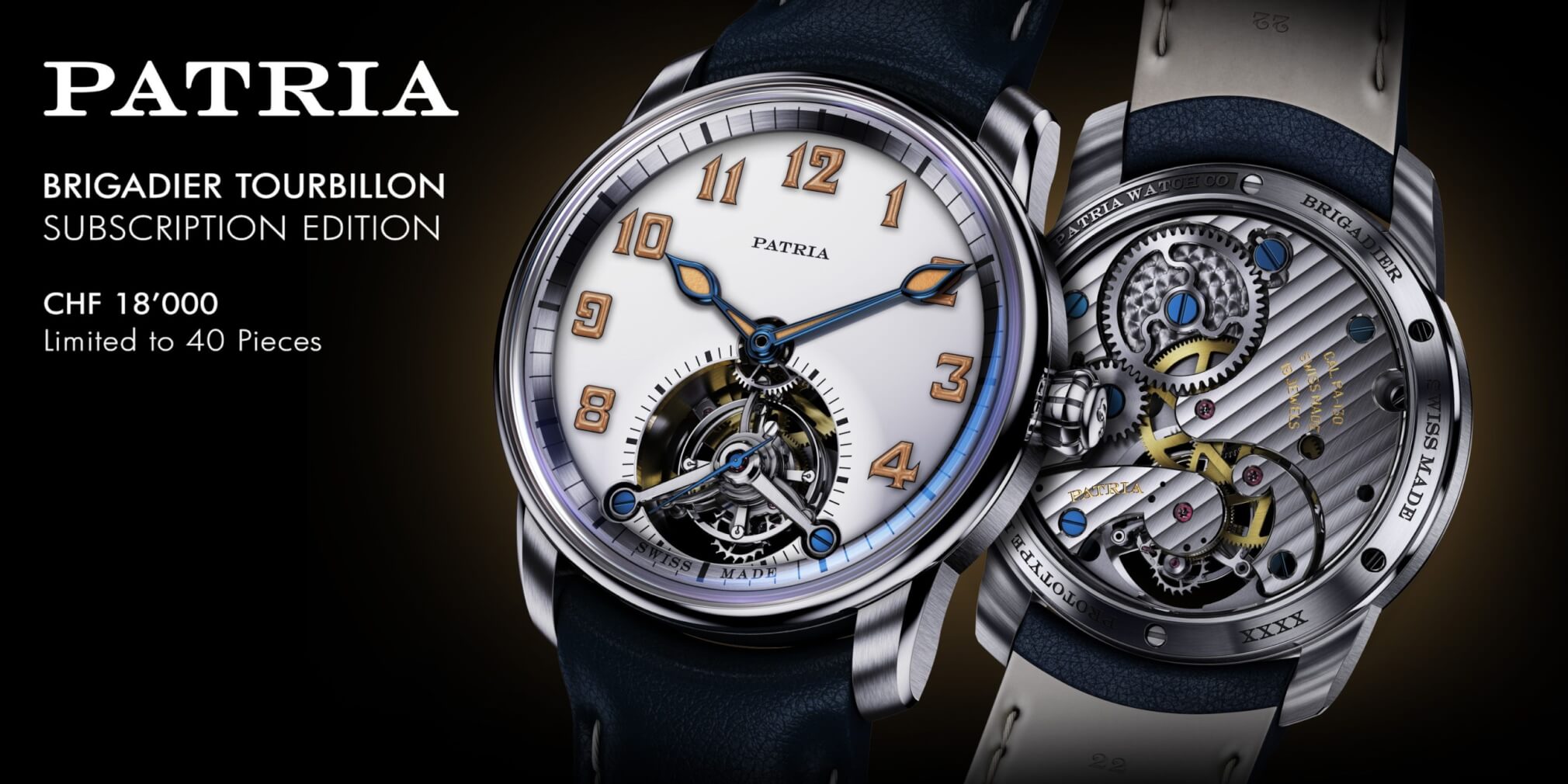


0.5 seconds is 15 seconds per month. This wonder hits the mark of basic quartz. Amazing watch with fantastic specs. Manna from heaven for movement nerds.